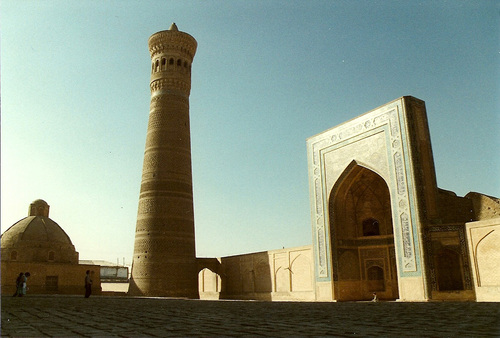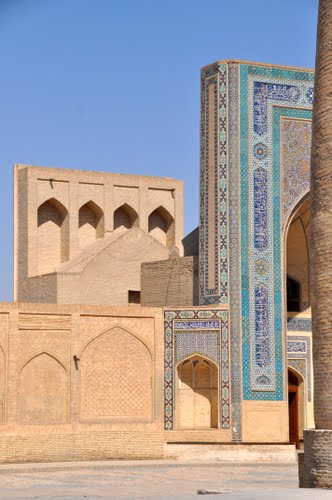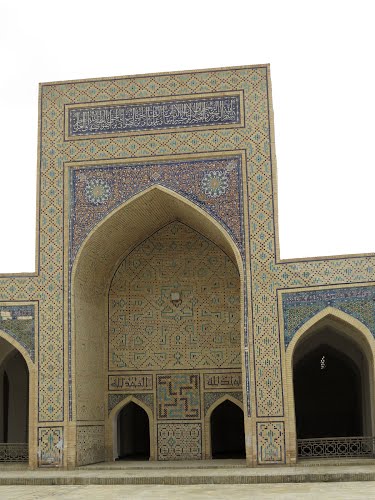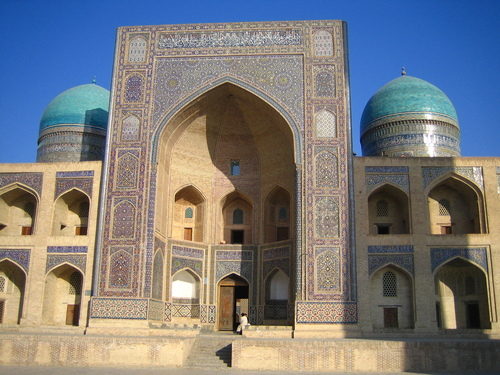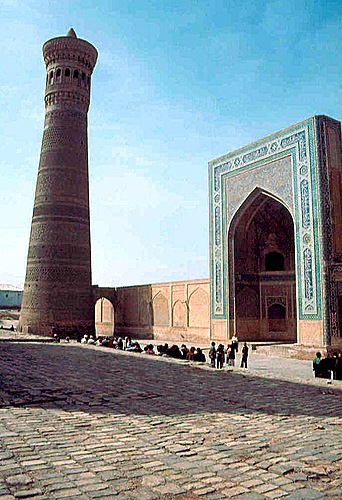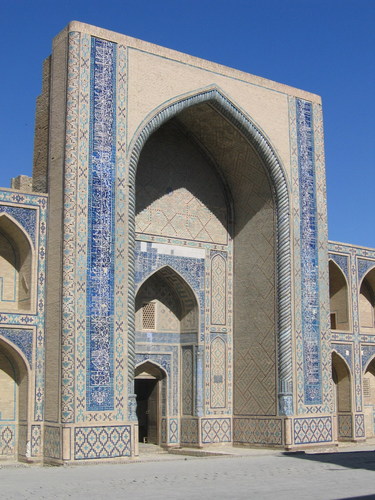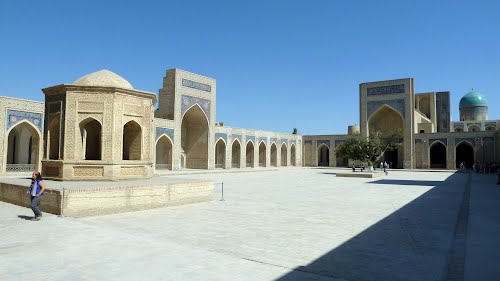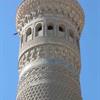Po-i-Kalyan or Poi Kalyan is an Islamic religious complex located around the Kalyan minaret in Bukhara, Uzbekistan.
History
The place where the complex Po-i-Kalyan is located is the site of a few completely ruined buildings from the past. In pre-Islamic era there was a central cathedral for fire-worshippers. Since 713 here, at the site south of the Ark, several edifices of main cathedral mosque were built then razed, restored after fires and wars, and moved from place to place. In 1127, the Karakhanid ruler Arslan-khan completed construction on the cathedral mosque with the minaret. The greatness of the structures so amazedGenghis Khan, he mistakenly believed the mosque to be a khans' palace. Nevertheless, the building of the mosque was not spared by the fire, and for many years after the conflagration it lay in ruins. All that remained intact of the original building was the minaret Kalyan.
After the death of Shaibani-khan in 1510, most local rulers only partially recognized the central government. The capital of the Shaibanid state was in Samarkand. In 1512 the nephew of Shaibani-khan, the young prince Muizz ad-Din Abu-l Gazi Ubaidullah, became sultan of Bukhara. He inherited the power from his father Mahmud-sultan, who was the cadet brother of Shaibani-khan and his faithful companion-in-arms. Until 1533, Ubaidullah-sultan was a successful governor of Bukhara, when he was enthroned as a khan of whole Shaibanid state - khan of Maverannahr. In spite of this he refused to move his residence to Samarkand - the state capitol. Moreover, he later made Bukhare the capital of the Shaibanid state. Afterwards, the state governed by Ubaidullah received a new name - Bukhara khanate. Thus Ubaidullah-khan (gov. 1533-1539) became the first khan of Bukhara khanate. While Ubaidullah-khan was the khan of Maverannahr, his son Abdul-Aziz-khan was the khan of Bukhara. They considered Bukhara to be their family lot. They were patriots of Bukhara and cared for success of the city.
The fact that the governor of Bukhara in 1514 built such grand mosque, which could rival with the symbol of royal Samakand - the Bibi-Khanym Mosque, shows a tendency to eventually make Bukhara the capital of the Shaibanid state. By the construction of Kalyan Mosque, Ubaidullah-sultan started the formation of a new capital, rather than fighting for domination over Samarkand, which was always hostile to Shaibanids.



